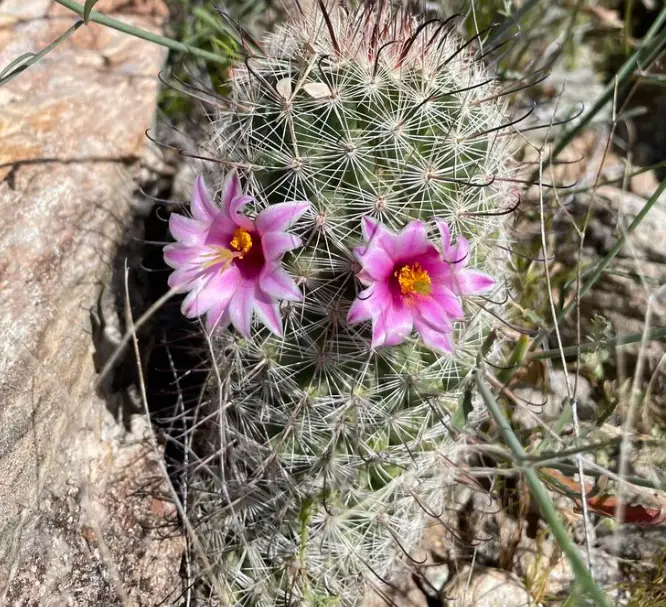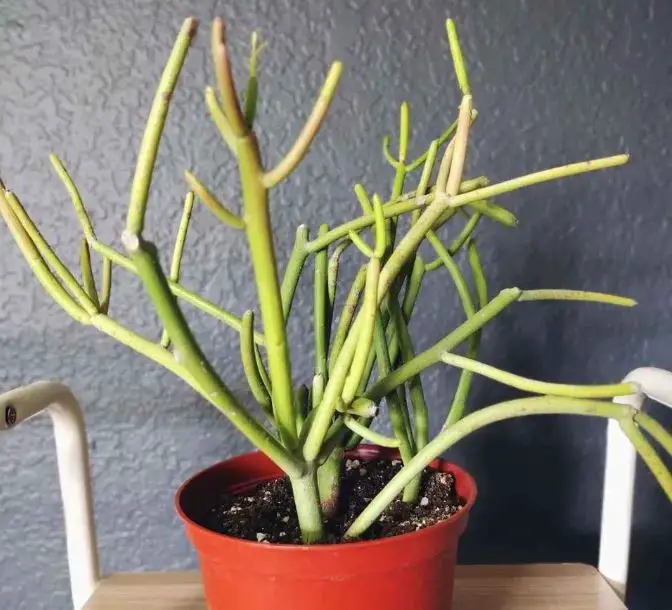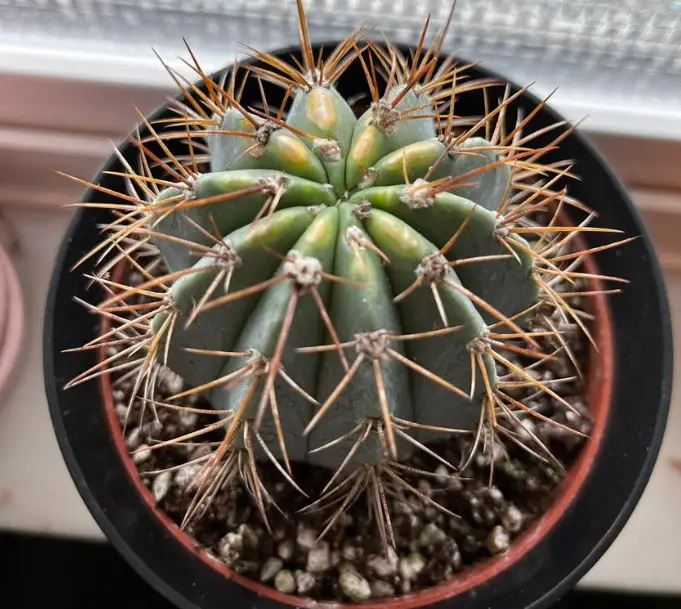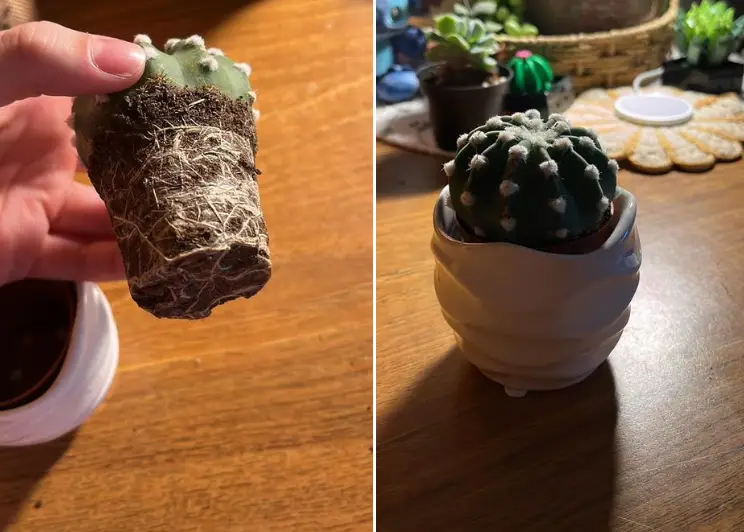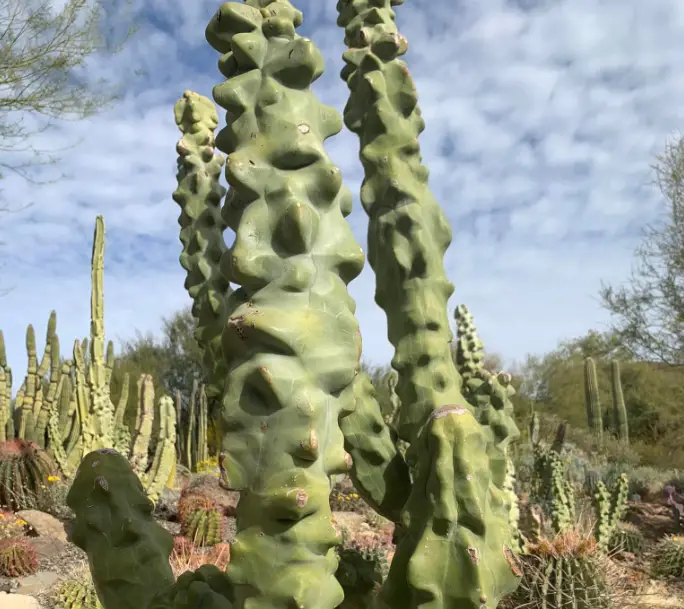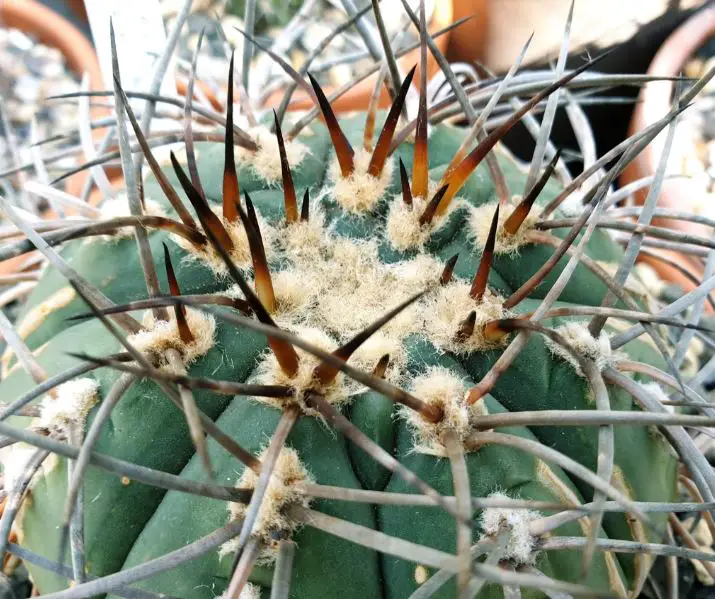Cactus Rot: Identification + How to Save a Rotting Cactus
Cacti are remarkably easy to care for in their right growth conditions. However, rot is a common problem in cactus plants which is caused by overwatering, poor soil drainage, fungal infections, or pest infestations.
When a cactus starts rotting, it typically loses its vigor and may die in a couple of days. It is possible to save a rotting cactus when the problem is identified early enough.
Here are some signs and symptoms of cactus rot:
- The cactus appear to be wilted or shriveled.
- A foul odor around the cactus stem or roots.
- Brown or black spots on the cactus may spread over time.
- Soft or mushy areas on the stem or roots of the cactus.
- Cactus falling over or leaning towards the ground.
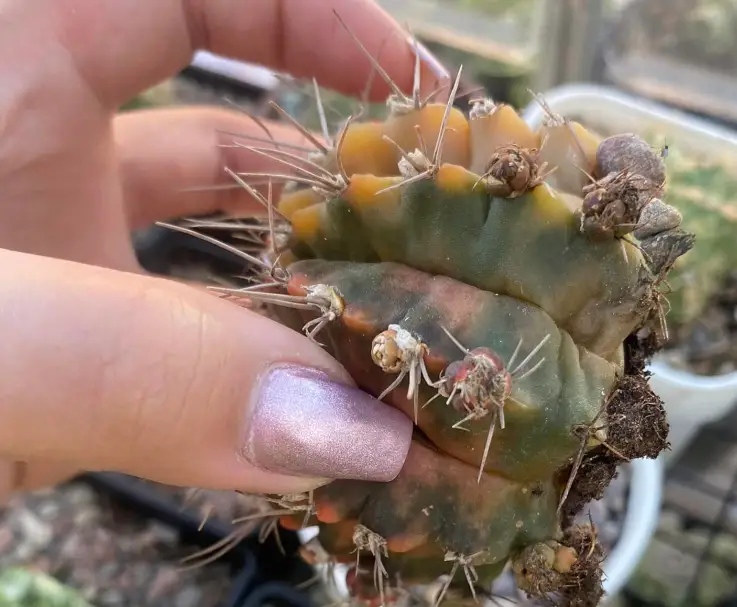
Cactus rot identification
Cactus rot commonly displays symptoms similar to other plant conditions and sometimes can be difficult to detect when it’s taking place on the plant roots. There are various types of cactus rot and it’s important to identify one that is affecting your plant, as the treatment may vary depending on the cause and severity of the rot.
The most common types of cactus rot include the following:
Root rot
Root rot is a common problem in cacti and succulents. It occurs when the roots of the cactus are damaged by overwatering or poor drainage. When there is excess water in the soil, the air stops from reaching the cactus roots causing them to suffocate, die and rot.
Additionally, fungi and bacteria that cause root rot thrive in damp soil conditions. It can be difficult to detect root rot as it happens below the ground. Symptoms of cactus root rot include mushy roots, a discolored base of the cactus, and wilting, or stunted growth.
Generally, cacti prefer well-draining soil. When potting or repotting your cactus, it’s important to use a cactus mix and a pot with drainage holes. Watering a cactus must be done when the soil is completely dry. The plants should also be kept away from extremely humid areas.
Stem rot
This occurs when the stem of the cactus is damaged by a fungal infection. Stem rot is commonly triggered by pest infestations or a physical injury. Symptoms of stem rot include soft or mushy spots on the cactus stem, a foul odor, and discoloration.
Insect pests such as mealybugs, scale, and spider mites feed by sucking sap from a plant. As a result, they create open wounds where moisture or fungal infections can enter the plant. Cactus can also get physically injured during pruning or when getting a cutting for propagation.
Crown rot
Crown rot occurs when the center or base of the cactus above the soil line is damaged by rot. It can easily be confused with cactus corking. This type of cactus rot is mainly caused by soil-borne fungi or moisture damage.
The rot can stop nutrients, water, and other important supplies from reaching the top section of the cactus resulting in wilting and stunted growth. Basal rot can affect the stability of the cactus and cause it to collapse. Therefore, be watchful when you see a cactus leaning on one side.
How to save a rotting cactus
Saving a rotting cactus is possible but will depend on the severity of the rot and the cause of it. Here are steps that you can follow to try and save your cactus:
- If the rot is limited to a specific area, such as a single stem, you can try to save the rest of the plant by cutting off the affected part with a clean, sharp knife or pruning shears. Make sure to remove all the rotten or discolored tissue.
- After removing the affected parts, let the cactus dry out for a few days in a cool, dry place. This will enable a callus to form over the wound to help prevent further rot and allow the cactus to heal.
- Once the cactus has dried out, replant it in well-draining soil that allows excess water to drain away. Make sure to use a pot with drainage holes and water the cactus sparingly. Lets the soil dry completely between the waterings.
- Place the cactus in a sunny, warm location, and protect it from cold drafts or sudden temperature changes. Cacti need plenty of bright, direct sunlight and warm temperatures to thrive.
- If the rot is caused by a fungal infection, you may need to treat the cactus with a fungicide. Follow the instructions on the product label carefully and apply the fungicide as directed.
To prevent cactus rot, ensure that your cactus receives adequate sunlight, has well-draining soil, and is not overwatered. In addition, you can prevent fungal infections by avoiding overhead watering and keeping the plants in a well-ventilated area.
Remember that not all cacti can be saved from rot, especially if the plant is severely damaged. If you are unsure about what to do, consult a professional or a knowledgeable plant enthusiast for advice.
Final Thought
Cactus rot is a serious condition that can be caused by excess moisture around the cactus or by fungal or bacterial infections. Rot can occur at any stage of the cactus’s life and can spread quickly. The most common types of cactus rot include basal or crown rot, stem rot, and root rot.
Without prompt treatment, rot can cause a cactus to wilt and die.If you notice any signs of rot on your cactus, you should immediately stop watering and let the soil dry or remove the affected tissues and repot the plant in fresh cactus soil.
References
“Texas Plant Disease Handbook,” Texas A&M AgriLife Extension
“Environmental factors affecting plant growth,” Oregon State University“Growing Succulents Indoors,” Iowa State
My name is Diane M Lewik, and I am the founder of this website. I am a degree holder in plant biology from the University of California – Berkeley. Over the years, I have cultivated a vast collection of succulents and I have learned a great deal about how to grow and care for these unique plants. Feel free to ask any questions in the comment section below.
